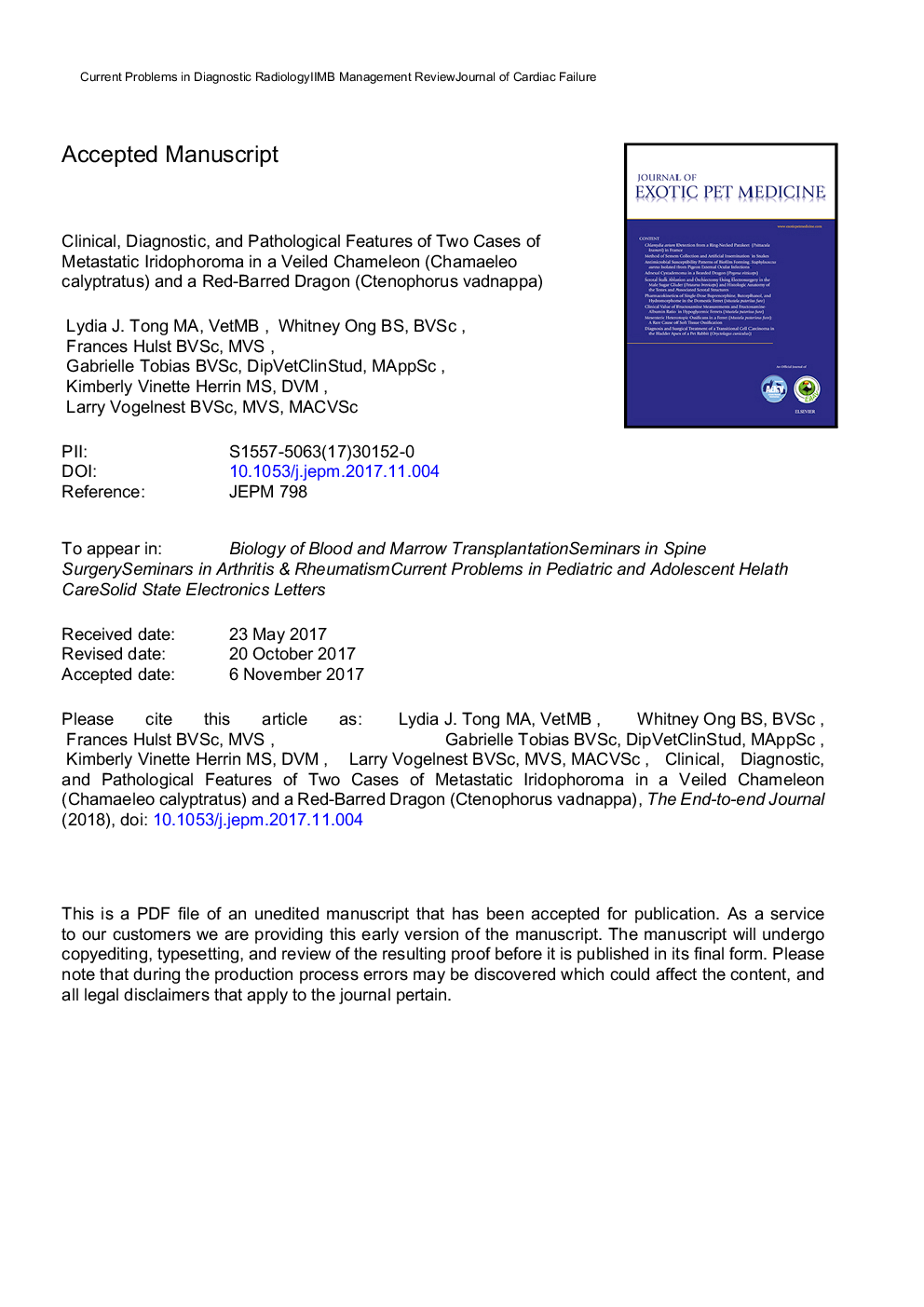| Article ID | Journal | Published Year | Pages | File Type |
|---|---|---|---|---|
| 10143123 | Journal of Exotic Pet Medicine | 2018 | 26 Pages |
Abstract
Iridophores are iridescent cutaneous pigment cells found in reptiles, fish, and amphibians. Neoplasms of iridophores are rarely reported, and little is known about their behaviour, metastatic potential, and prognostic indicators. This paper reports details of the clinical course and pathological findings of metastatic iridophoroma in a veiled chameleon (Chamaeleo calyptratus) and red-barred dragon (Ctenophorus vadnappa). The veiled chameleon presented with a subcutaneous mass on the right lateral elbow and was diagnosed as an iridophoroma on fine needle aspiration. It was otherwise clinically normal. Within 35 days of excision, multiple secondary skin masses developed which were often non-pigmented and required microscopic examination to identify them as iridophoroma metastases. There were in total 54 days between the first detection of the primary mass and end stage, extensive cutaneous and visceral metastatic disease, and there had been no detectable primary mass during routine clinical examination 128 days prior to death. The red-barred dragon presented with a white sub-mandibular mass. While undergoing an excisional biopsy the animal expired, post-mortem examination revealed a cutaneous malignant iridophoroma with tumour cell clusters seen in pulmonary arterial vessels, suggesting that surgical handling of iridophoroma could precipitate the release of circulating tumour cell clusters. This is the first iridophoroma described in a red-barred dragon and the second report of a malignant iridophoroma in a veiled chameleon. Timely detection and careful excision of lizard iridophoroma may be an important factor in clinical outcome.
Related Topics
Life Sciences
Agricultural and Biological Sciences
Animal Science and Zoology
Authors
Lydia J. MA, VetMB, Whitney BS, BVSc, Frances BVSc, MVS, Gabrielle BVSc, Dip. VetClinStud, MAppSc, Kimberly Vinette MS, DVM, Larry BVSc, MVS, MACVSc,
